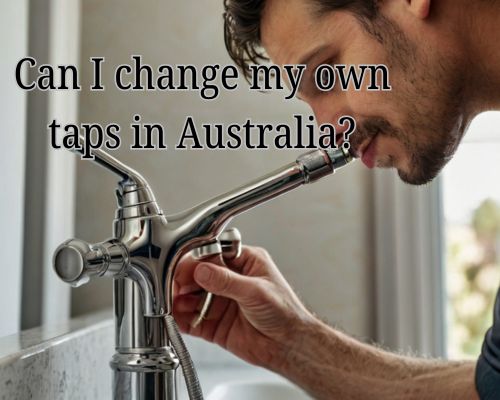How Many Downpipes Do I Need in Australia? A Comprehensive Guide
How Many Downpipes Do I Need in Australia? A Comprehensive Guide
Understanding how many downpipes you need for your project in Australia is crucial for effective roof drainage and can prevent potential water damage.
The number of downpipes required is influenced by factors such as roof size, slope, and local rainfall intensity. These standards suggest using a calculator or seeking professional guidance to determine specific requirements, ensuring you meet both functional and regulatory needs.

In construction and design, both the gutters and downpipes must be correctly sized and installed. This ensures that water is efficiently channeled away from your property.
Changes introduced in the NCC 2022 have revised these requirements, including specifications like bracket support and freeboard limits in gutters.
This adaptation highlights the importance of using updated resources and calculations for optimal results in your project.
Using tools such as a gutter and downpipe calculator can assist in planning.
These help by considering factors like the roof’s catchment area and chosen pipe size.
Consistent sizing of downpipes across a project often simplifies installation, but the specifics might vary based on your unique roof layout and environmental conditions.
Such considerations guarantee that you not only comply with regulations but also maximize the effectiveness of your drainage system.
Assessing Roof Drainage Requirements
“Proper roof drainage is essential to prevent water accumulation and ensure adequate stormwater management. This involves assessing factors such as catchment areas, rainfall intensities, and appropriate gutter and downpipe sizes.” said Steve Arnie of Gutter Cleaning Melbourne Co.
Determining Downpipe Size and Quantity
To determine the correct downpipe size and quantity, start by calculating your roof’s catchment area, which includes the entire surface directing water towards the gutter.
You can find guidance in the Australian Standard AS/NZS 3500.3:2021 for stormwater drainage systems, which outlines the requirements for downpipe sizes based on roof areas and associated rainfall intensity.
Consider the Annual Exceedance Probability (AEP) for your location, which helps estimate how often a particular rainfall intensity might occur each year.
This data is critical to choosing downpipe capacities that can handle peak rainfall events.
Use tools such as the NCC 2022 Volume Two GDO Calculator to input your location and obtain recommendations for downpipe numbers and sizes suitable for maintaining proper drainage.
Selecting Gutters and Downpipes
Choosing appropriate gutters involves evaluating your roof design and selecting gutter types that can manage projected water volumes.
Valley gutters, for example, should be installed near roof valleys to handle water flow from pitched areas.
The gutter cross-sectional area is another consideration, influencing how much water it can carry without overflowing.
When selecting downpipes, ensure they are compatible with your chosen gutter type and can accommodate the expected water volume dictated by your catchment area. For more, see Steve Arnie of Gutter Cleaning Melbourne Co.
Consider both the gutter and downpipe sizes and always refer to the National Construction Code (NCC) 2022 requirements to ensure compliance.
Use a calculator for rainfall intensity to confirm the setup is suitable for strong storms prevalent in your region.
Installation and Compliance
When installing downpipes in Australia, focus on ensuring effective drainage and meeting regulatory standards.
Consider factors like roof design, gutter sizes, and specific plumbing codes to successfully achieve optimal performance.
Designing for Effective Drainage
Your roof design and slope play a critical role in how well water is channeled to the downpipes.
A steeper roof can accelerate water flow, requiring fewer downpipes, while flatter roofs may demand more.
Select the appropriate gutter sizes and types, such as eaves gutters or box gutters, to accommodate your building’s unique needs and the likely volume of water from rainfall events.
Ensure gutters are free from obstructions by considering stop ends and flashing. This will help prevent overflow, especially where water flows are concentrated, like valley gutters.
For additional efficiency, take into account the nominal and internal diameters of your gutters and downpipes which influence how much water can be effectively managed.
Ensuring Regulatory Compliance
In Australia, compliance with regulations such as the National Construction Code (NCC) 2022 and the plumbing code AS/NZS 3500.3 is mandatory.
These standards specify how downpipes should be installed and the number required according to roof area.
Downpipes should typically not serve more than 12 metres of gutter length each.
Proper positioning near valley gutters ensures efficient drainage and water management.
Use overflow measures to accommodate excessive rainfall and avoid water damage to the building.
Secure downpipes with appropriate brackets, taking care to fix them securely at corners and other critical points.
These actions contribute to meeting the required standards and ensuring long-term functionality.
Additional Considerations for Downpipe Efficiency
Consider the environmental factors. For example, your location near the sea or elders’ land may require additional protective features against corrosion or aesthetic restrictions.
Expansion joints can be beneficial for accommodating changes in length due to temperature variations. They help ensure the integrity of the system.
Installing extra features like leaf guards keeps your gutters cleaner. This reduces maintenance needs and improves efficiency.
Regular maintenance and inspection can preempt potential issues. This can prolong the life of your drainage system and ensure efficient performance.
Focus on these specifics to ensure your downpipe installation is both efficient and compliant with Australian regulations.

